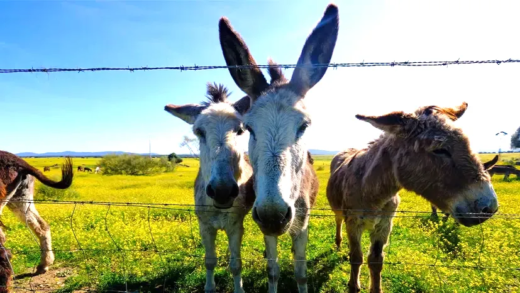Gorilla nests are essential for their safety, comfort, and social interactions. They vary among species and habitats, revealing crucial insights into gorilla behavior and ecology. Daily nest building aids in predator avoidance, warmth, and social bonding, while also playing a significant role in conservation efforts by providing data on habitat health and gorilla populations.
Why Do Gorillas Build Nests?
Gorilla nests play a crucial role in the daily lives of these majestic creatures. Each night, gorillas build new nests, primarily for safety and comfort. This behavior stems from their instinct to protect themselves from predators and the elements. By creating a fresh nest every evening, they reduce the risk of attracting unwanted attention from predators, as the scent dissipates more rapidly than with a reused nest.
Moreover, constructing a new nest allows gorillas to select the best location for their needs. They often choose spots that are sheltered and provide a good view of their surroundings. This daily ritual is not just a matter of safety; it also contributes to their overall well-being. A well-constructed nest provides warmth and a sense of security, essential for restful sleep.
In summary, gorillas build nests daily to ensure their safety, comfort, and well-being, highlighting their remarkable adaptability in the wild.
What Materials Do Gorillas Use for Their Nests?
Gorilla nests are fascinating structures primarily made from readily available materials in their habitats. The main components include leaves, twigs, and branches. Gorillas are quite selective about their materials, often choosing soft, pliable leaves to create a comfortable base. This not only ensures a good night’s sleep but also provides insulation against the cold.
Typically, the construction process involves the following materials:
- Leaves: Soft, broad leaves are often used to line the nest, offering comfort and warmth.
- Twigs: Sturdy twigs form the framework, providing support and structure.
- Branches: Larger branches may be used to create a more extensive nest, especially for larger gorilla species.
Interestingly, the choice of materials can vary based on the gorilla’s habitat. For instance, gorillas in dense forests might use different foliage compared to those in more open areas. This adaptability demonstrates their intelligence and resourcefulness in utilizing their environment effectively.
How Long Does It Take for Gorillas to Build a Nest?
The time it takes for gorillas to build a nest can vary significantly based on their species and the complexity of the nest. On average, it takes a gorilla about 10 to 15 minutes to construct a nest. This quick process involves selecting materials, arranging them, and ensuring the structure is stable enough to support their weight.
Interestingly, younger gorillas may take longer as they are still mastering the art of nest-building. Adult gorillas, having honed their skills over time, can construct nests more efficiently. Factors influencing the time taken include:
- Species: Different species may have varying techniques and styles.
- Environmental conditions: Weather and available materials can affect the speed of construction.
- Experience: Older, more experienced gorillas typically build nests faster than younger ones.
In conclusion, gorillas are adept nest builders, capable of creating comfortable shelters in a short time, showcasing their practical skills in the wild.
Do All Gorillas Build Nests?
Not all gorillas build nests in the same way. While nest-building is a common behavior among gorillas, it varies among species. Generally, all gorillas, including the Eastern and Western species, create nests. However, the style and complexity of these nests can differ significantly.
Some key points about nest-building in gorillas include:
- Species Variation: Western lowland gorillas may build simpler nests compared to the more complex structures of mountain gorillas.
- Age Factor: Younger gorillas might not build nests as intricately as older ones, who have learned the best techniques over time.
- Environmental Influence: Gorillas in dense forests may utilize different materials and techniques compared to those in more open habitats.
In summary, while all gorillas build nests, the methods and materials used can vary widely based on species and environmental conditions.
What Purpose Do Gorilla Nests Serve?
Gorilla nests serve several essential purposes that are vital for their survival and well-being. Firstly, these nests provide safety from predators. By sleeping in a well-constructed nest, gorillas can rest assured that they are less vulnerable to potential threats.
Additionally, gorilla nests offer:
- Comfort: A cozy nest made from soft leaves and twigs ensures a good night’s sleep, which is crucial for their health.
- Warmth: Nest construction helps retain heat, especially during cooler nights, aiding in thermoregulation.
- Social Interaction: Nest-building can also be a social activity, where gorillas bond and communicate while constructing nests together.
Ultimately, the purpose of gorilla nests extends beyond mere shelter; they are integral to the social structure and daily activities of these remarkable primates.
How Do Scientists Study Gorilla Nests?
Scientists study gorilla nests to gain insights into their behavior and ecology. By observing and analyzing these structures, researchers can learn about various aspects of gorilla life.
Methods for studying gorilla nests include:
- Field Observations: Scientists often track gorilla groups, documenting nest locations and the materials used.
- Camera Traps: Using motion-activated cameras, researchers can capture footage of gorillas building nests and interacting with their environment.
- Environmental Analysis: Studying the surrounding habitat helps understand how it influences nest-building behavior and material selection.
By studying gorilla nests, scientists can gather valuable data that contributes to conservation efforts and enhances our understanding of these incredible animals in their natural habitats.
Gorilla Nests and Their Habitat: What Can They Tell Us?
Gorilla nests are not just resting places; they provide significant insights into the gorillas’ habitat. The type of nest constructed often reflects the environmental conditions in which the gorillas live. By examining the materials used and the location of the nests, researchers can infer various aspects of the gorillas’ ecological preferences.
For instance, gorillas in dense forest environments tend to utilize thicker foliage and more robust materials compared to those in open areas. This indicates their adaptability to different habitats and their ability to find suitable nesting materials. Additionally, the distribution of nests can reveal patterns in gorilla movement and habitat use, helping conservationists identify critical areas that need protection.
Overall, studying gorilla nests sheds light on their habitat, demonstrating the relationship between the animals and their environment.
Variation in Nest Building Among Different Gorilla Species
Variation in nest building is evident among different gorilla species, showcasing their unique behaviors and adaptations. Each species has developed distinct nesting styles that reflect their physical characteristics and environmental needs. For example, mountain gorillas are known to build larger and more complex nests compared to their lowland relatives.
Key differences include:
- Size and Structure: Mountain gorillas often create nests that can accommodate their larger body size, while smaller species may opt for simpler designs.
- Material Choices: The types of materials used can vary significantly; for instance, Western lowland gorillas may use softer leaves compared to the sturdier twigs favored by Eastern gorillas.
- Building Techniques: Differences in techniques can also be observed, with some species displaying more intricate construction methods.
Understanding these variations is crucial for conservation efforts, as it highlights the need to tailor habitat protection strategies to the specific requirements of each species.
Benefits of Building New Nests Each Night
Building new nests each night offers several benefits for gorillas. Firstly, it reduces the risk of predation. By not reusing nests, gorillas minimize scent trails that could attract predators. Secondly, new nests provide a level of comfort and warmth, essential for a good night’s sleep, especially in cooler climates.
Additionally, constructing fresh nests allows gorillas to:
- Select Optimal Locations: Each night, gorillas can choose the safest and most comfortable spot based on their surroundings.
- Enhance Social Bonds: Nest building can be a communal activity, strengthening social ties within the group.
- Adapt to Environmental Changes: Daily nest construction ensures that gorillas can respond quickly to changes in their habitat.
In essence, the practice of building new nests each night is a reflection of the gorillas’ adaptability and survival strategies in the wild.
How Gorilla Nests Aid in Conservation Efforts
Gorilla nests play a significant role in conservation efforts. Understanding nesting behaviors helps researchers assess gorilla populations and their health. Monitoring nest locations can provide valuable data on gorilla distribution and habitat use, essential for developing effective conservation strategies.
Moreover, nests can serve as indicators of environmental health. For example, a decrease in nest quality or quantity may signal habitat degradation, prompting immediate conservation action. By protecting the areas where gorillas build their nests, conservationists can safeguard not only the gorillas but also the broader ecosystem they inhabit.
In conclusion, gorilla nests are vital for both the survival of these magnificent creatures and the health of their habitats, making them a focal point for conservation efforts.





Comments are closed.